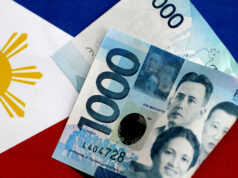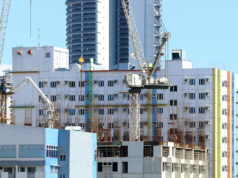PHL banks to continue expanding in 2017, 2018
By Janine Marie D. Soliman,
Reporter
THE PHILIPPINE banking industry is expected to continue growing this year and next, driven by the sector’s low interest rates, improved asset quality, solid profitability, boosted by the country’s strong economic growth, an economist at S&P Ratings Services said.
S&P credit analyst Ivan Tan said Philippine banks are expected to continue expanding in 2017 and 2018, with loan growth seen to hit a 15% to 17% in the next two years, higher than end-2016’s actual 16.5% increase.
“We believe that the credit cycle in the Philippines has further to run,” Mr. Tan was quoted saying in an Aug. 23 report titled Philippine Banks To Continue To Ride Robust Economic Growth.
“Most of the factors that drive credit cycles — corporate profits, low interest rates, and abundant liquidity — still look very much in place,” he added.
Data from the Bangko Sentral ng Pilipinas (BSP) bared domestic liquidity or M3 expanded by 13.2% in June to P9.878 trillion on the back of strong appetite for credit, which in turn, fuelled growth in money supply.
M3 growth, which is the broadest measure of money in an economy, picked up from the downward-revised 11.3% in May and is the fastest pace seen in a year or since a 13.4% rise in July 2016. It grew 1.8% month-on-month.
Loan growth among Philippine banks is expected to remain strong compared to its regional peers for the next two years amid S&P’s view of sustained expansion, and with borrowing costs and interest rates remaining low “by historical standards” and banks still having excess liquidity to lend.
“Credit penetration is moderately low, with private sector credit-to-GDP (gross domestic product) ratio of about 50%, and with room to rise,” Mr. Tan said in the report.
The global debt watcher also noted that the country’s robust economic fundamentals will support the banking sector’s borrower repayment.
S&P added that the government’s proposed tax reform “could reinforce the positive credit cycle, in our view.”
“The proposals could lead to higher disposable incomes and consumer spending. Lower personal income tax rates could boost the spending power of wage earners while the reduced corporate income tax rate could encourage investments. By broadening the revenue base and raising revenue from new sources, the government may be able to increase spending on much-needed infrastructure and human capital to drive economic growth,” Mr. Tan said in the report.
Amid strong economic and financial fundamentals, the global credit rater said it has a stable outlook for the sector, citing the industry’s capital adequacy ratio (CAR) of 15.3% by end-March which is “comfortably above regulatory minimum.”
S&P had kept its 6.4% economic growth forecast for the country after GDP grew by 6.5% in the second quarter, slightly faster from first quarter’s 6.4% but easing from the year-ago’s 7.1% reading, which was boosted by expenditures related to the May 2016 general elections.
This brought first-half growth to 6.45%, slightly up the government’s 6.5-7.5% growth projection for end-2017.
The tax plan, which is expected to be in place by 2018, will raise the excise duties on oil, cars and sugar-sweetened beverages and reduce exemptions to the value-added tax, coupled with a reduction in personal income tax rates.
Despite its outlook of a positive credit cycle for the sector, S&P noted it sees consumer lending a weak spot, noting: “Consumer lending, however, is a relatively unfamiliar territory and the availability of consumer data is limited.”
“Philippines’ consumer loans segment has considerable potential for growth, in our view. However, the high branching costs to reach customers in this large archipelago is a hindrance. Banks are also justifiably cautious, given the lack of comprehensive consumer data and the high reported consumer NPLs (non-performing loans),” Mr. Tan said.
At end-2016, consumer non-performing loans made up 3.9% of banks’ lending business versus the sector’s overall 2% NPL ratio.
Nonetheless, S&P said the full rollout of the country’s national credit information database in the first quarter of 2018 would “improve information availability and help banks make better lending decisions.”
State-run Credit Information Corp. expects the centralized credit information system to go live by January 2018, but had noted of some system issues which may delay the process.
The Philippines holds a “BBB” rating with a “stable” outlook from S&P, one notch above minimum investment grade, which was affirmed last April, with the view that domestic conditions remain conducive for sustained economic growth.
A stable outlook means that the state’s ratings are unlikely to change over the next year.



